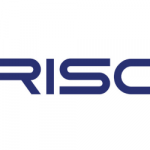Experiments Prove Quantum Computing Errors Correlated, Tied to Cosmic Rays

(ScitechDaily) Charged impulses, even minute ones like those from cosmic rays absorbed by the system, can create a blast of (relatively) high-energy electrons that can heat up the quantum device’s substrate just long enough to disrupt the qubits and disturb their quantum states, Lawrence Livermore National Laboratory (LLNL) physicist and a host of collaborators researchers have found.
When a particle impact occurs, it produces a wake of electrons in the device. These charged particles zoom through the materials in the device, scattering off atoms and producing high-energy vibrations and heat. This alters the electric field as well as the thermal and vibrational environment around the qubits, resulting in errors, LLNL physicist Jonathan DuBois, explained.
“We’ve always known this was possible and a potential effect — one of many that can influence the behavior of a qubit,” DuBois added. “We even joked when we saw bad performance that maybe it’s because of cosmic rays. The significance of this research is that, given that sort of architecture, it puts some quantitative bounds on what you can expect in terms of performance for current device designs in the presence of environmental radiation.”
To view the disruptions, researchers sent radio frequency signals into a four qubit system and, by measuring their excitation spectrum and performing spectroscopy on them, were able to see the qubits “flip” from one quantum state to another, observing that they all shift in energy at the same time, in response to changes in the charge environment.
The team concluded that quantum error correction will require development of mitigation strategies to protect quantum systems from correlated errors due to cosmic rays and other particle impacts. The results will likely impact future quantum system architecture, such as putting quantum computers behind lead shielding or underground, introducing heatsinks or dampers to quickly absorb energy and isolate qubits, and alter the types of materials used in quantum systems.





















